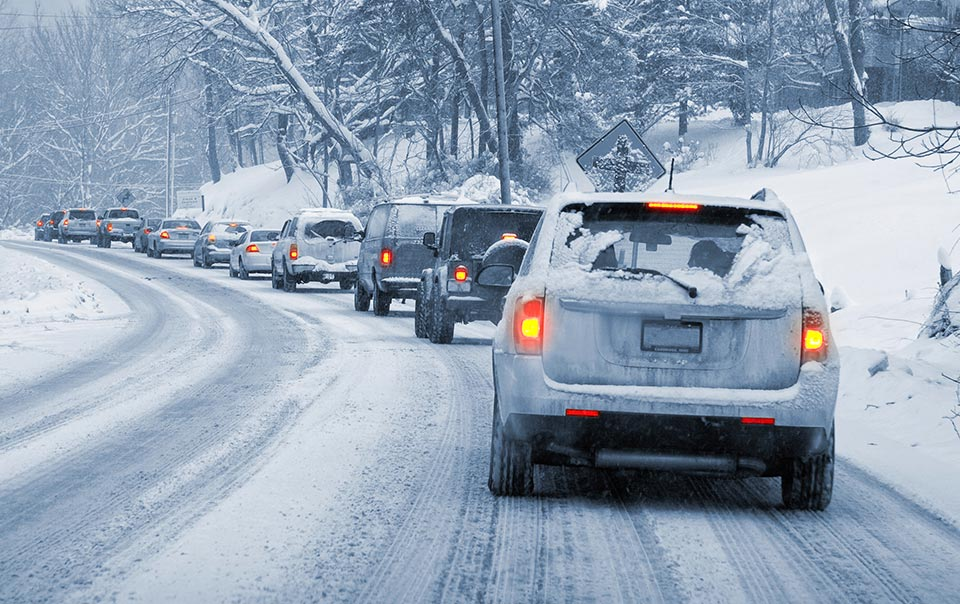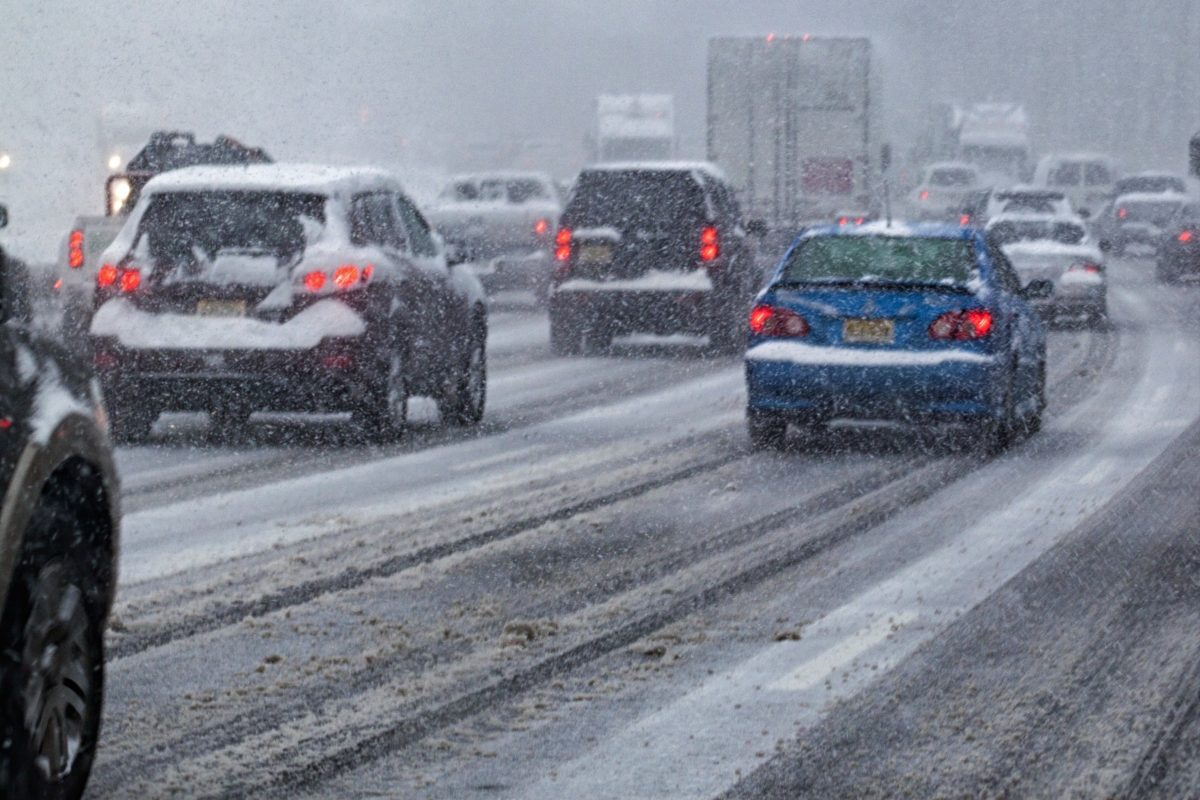15 Tips for Safe Driving in a Storm (2023)

Driving in a storm is a daunting task, even for experienced drivers. However, sometimes it is unavoidable, and you need to be prepared to stay safe on the road. Stormy weather can create hazardous conditions such as decreased visibility, slippery roads, and strong winds. In this article, we will provide you with some essential safe driving tips to help you in Driving in a storm with confidence and ensure your safety on the road.

Contents
- 1 Table of Contents
- 2 Check Weather Conditions Before You Leave
- 3 Prepare Your Vehicle
- 4 Reduce Your Speed
- 5 Increase Your Following Distance
- 6 Avoid Sudden Movements
- 7 Use Your Headlights
- 8 Use Windshield Wipers Effectively
- 9 Be Mindful of Hydroplaning
- 10 Don’t Use Cruise Control
- 11 Use Caution When Approaching Puddles or Flooded Roads
- 12 Use Your Emergency Flashers if Necessary
- 13 Pullover and Wait if Conditions Become Too Dangerous
- 14 Stay Calm and Focused
- 15 Plan Your Route Ahead of Time
- 16 Stay Informed During Your Trip
- 17 FAQs
Table of Contents
- Check Weather Conditions Before You Leave
- Prepare Your Vehicle
- Reduce Your Speed
- Increase Your Following Distance
- Avoid Sudden Movements
- Use Your Headlights
- Use Windshield Wipers Effectively
- Be Mindful of Hydroplaning
- Don’t Use Cruise Control
- Use Caution When Approaching Puddles or Flooded Roads
- Use Your Emergency Flashers if Necessary
- Pull Over and Wait if Conditions Become Too Dangerous
- Stay Calm and Focused
- Plan Your Route Ahead of Time
- Stay Informed During Your Trip
Check Weather Conditions Before You Leave
Before you head out, check the weather forecast and any warnings or advisories in your area. If possible, postpone your trip if a storm is expected, especially if it is severe.
Prepare Your Vehicle
Make sure your vehicle is in good condition and prepared for the storm. Check your windshield wipers, tires, brakes, and headlights. Ensure they are all functioning correctly. Top up your windshield washer fluid and gas. It’s also a good idea to keep an emergency kit in your vehicle, including a flashlight, blanket, non-perishable food, and water.
Reduce Your Speed
Reduce your speed and maintain a slow and steady pace. Driving too fast in a storm can cause your vehicle to lose traction, and you may lose control.
Increase Your Following Distance
Increase your following distance to at least six seconds, which will give you enough time to react if you need to brake suddenly. You may need to increase this distance if the storm is particularly severe.
Avoid Sudden Movements
Avoid any sudden movements such as sharp turns, sudden stops, or sudden accelerations. These can cause your vehicle to lose control and skid on the road.
Use Your Headlights
Use your headlights, even during the daytime, to increase your visibility to other drivers. Use your low-beam headlights in heavy rain, fog, or snow.
Use Windshield Wipers Effectively
Use your windshield wipers effectively to clear your windshield of rain or snow. Ensure that they are functioning correctly and replace them if necessary.
Be Mindful of Hydroplaning
Hydroplaning occurs when your vehicle’s tires lose contact with the road and begin to slide on a film of water. To avoid hydroplaning, reduce your speed, avoid puddles, and drive in the tracks of the vehicle ahead of you.
Don’t Use Cruise Control
Avoid using cruise control during a storm, as it can cause your vehicle to accelerate or decelerate unexpectedly and lose control.
Use Caution When Approaching Puddles or Flooded Roads
If you encounter puddles or flooded roads, approach them with caution. Slow down and assess the depth of the water. If it is too deep, turn around and find another route.
Use Your Emergency Flashers if Necessary
If you need to pull over due to the storm’s severity, use your emergency flashers to warn other drivers that you are stopping.
Pullover and Wait if Conditions Become Too Dangerous
If conditions become too dangerous to drive, pull over and wait until the storm passes. Find a safe place to park, such as a rest area or parking lot, and turn off your vehicle’s engine. Stay in your vehicle with your seatbelt on until the storm subsides.
Stay Calm and Focused
Driving in a storm can be stressful, but it’s important to remain calm and focused. Stay alert and avoid any distractions such as texting, eating, or adjusting the radio. Keep both hands on the steering wheel and your eyes on the road.
Read More: https://highbrowlawyer.com/top-20-law-firms-in-alaska-in-2023/
Plan Your Route Ahead of Time
Before you head out, plan your route ahead of time. Avoid areas prone to flooding or where the storm is expected to be severe. Keep an eye on traffic reports and any road closures.
Stay Informed During Your Trip
Stay informed during your trip by listening to local weather reports or using a weather app. If conditions worsen, consider finding a safe place to pull over and wait until the storm passes.
In conclusion, driving in a storm requires caution and preparation. Before you head out, check the weather forecast, ensure your vehicle is in good condition, and plan your route. Once on the road, reduce your speed, increase your following distance, avoid sudden movements, use your headlights and windshield wipers effectively, and be mindful of hydroplaning. If conditions become too dangerous, pull over and wait until the storm subsides. driving in a storm requires caution and preparation. Remember to stay calm, focused, and informed during your trip. By following these safe driving tips, you can navigate a storm with confidence and arrive at your destination safely.
Read More: https://highbrowlawyer.com/top-20-law-firms-in-alaska-in-2023/
FAQs
- Can I use cruise control during driving a storm? No, it’s best to avoid using cruise control during a storm, as it can cause your vehicle to lose control unexpectedly.
- How far should I increase my following distance during driving in a storm? It’s recommended to increase your following distance to at least six seconds, which will give you enough time to react if you need to brake suddenly.
- Can I use my high-beam headlights during driving in a storm? No, it’s best to use your low-beam headlights in heavy rain, fog, or snow to avoid reflecting light back at you and reducing visibility.
- What should I do if I encounter flooded roads during driving in a strom? Approach them with caution, slow down, and assess the depth of the water. If it’s too deep, turn around and find another route.
- Should I stay in my vehicle during driving in a storm? If conditions become too dangerous, pull over and find a safe place to park, such as a rest area or parking lot. Stay in your vehicle with your seatbelt on until the storm subsides.